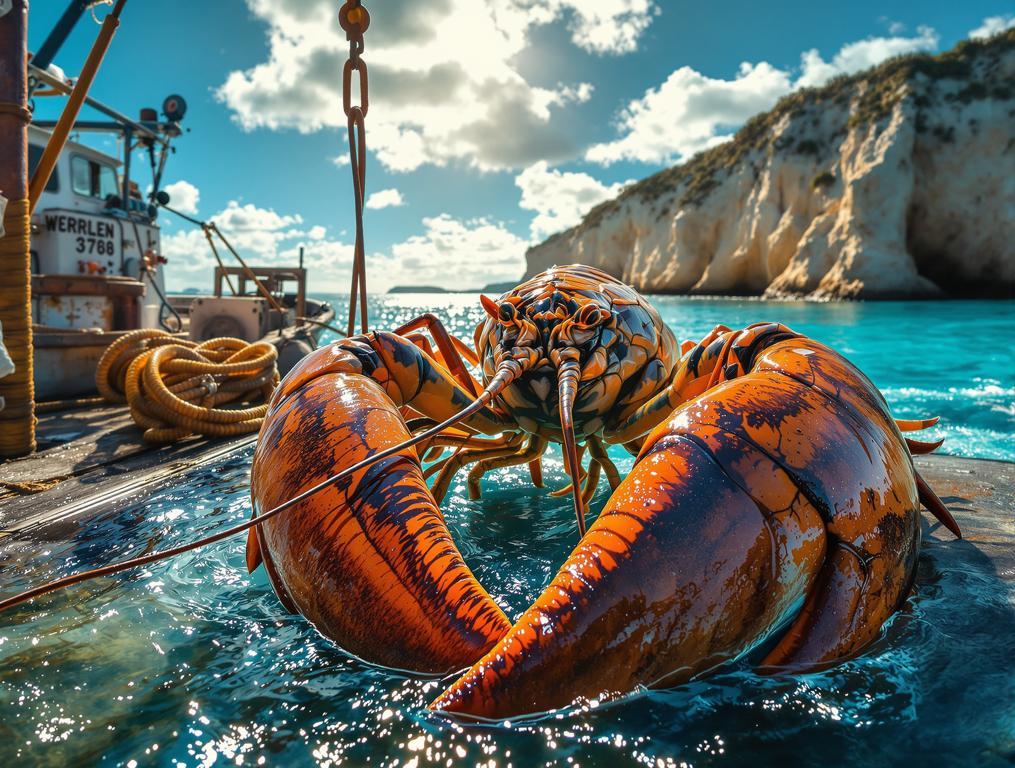The fishing boats bob gently at the marina as I arrive in Jurien Bay, Western Australia. This small town of 1,600 residents seems unremarkable at first glance, but I quickly discover its outsized secret: it’s the epicenter of a $122 million crayfishing industry. Within hours, I’m aboard a commercial vessel watching massive Western Rock Lobsters being hauled from the Indian Ocean, destined for plates in Tokyo, New York, and beyond. Yet somehow, 21% of Western Australia’s rare Australian sea lions still choose to make their home in these same productive waters.
The $122 Million Crayfishing Capital Where Visitors Join the Catch
A weathered crayfishing captain examines his catch, expertly measuring a sizeable Western Rock Lobster. “We’ve been pulling these from these waters for generations,” he tells me, demonstrating how to check if they meet the minimum size requirements.
Unlike emerging agricultural tourism hotspots elsewhere, Jurien Bay transforms its working crayfishing industry into immersive visitor experiences without sacrificing authenticity. Operators like Jurien Bay Oceanic offer $160 lobster catch-and-cook tours where visitors can pull up pots alongside commercial fishermen.
What strikes me most is the stunning contrast between industry and conservation. The waters that support this crayfishing powerhouse also nurture the Jurien Bay Marine Park, a protected zone extending 200 kilometers along the coast.
At Essex Rocks, just 4 nautical miles south of town, sea lions bask on limestone formations while crayfishing boats work nearby. This delicate balance has allowed both to thrive for decades.
“We’re fiercely proud of maintaining these waters. The same ocean that feeds our families also nurtures our wildlife. When visitors see both our industry and our sea lions thriving together, they understand what makes this place special.”
How a Working Harbor Competes with California’s Coastal Tourism
While Margaret River focuses on wine tourism like California’s family-owned wineries, Jurien Bay’s crayfishing industry remains its authentic economic backbone. The Blessing of the Fleet ceremony—part of November’s Indian Ocean Festival—showcases this cultural connection, as boats receive traditional blessings before the season begins.
Unlike California’s coastal towns with floating homes and manufactured attractions, Jurien Bay’s marine environment remains largely wild and undeveloped. The 30+ sea lions at Essex Rocks are truly wild, not the semi-habituated animals found at more famous destinations.
The turquoise waters of Jurien Bay Marine Park rival even Caribbean beaches, but with the added attraction of rare Australian sea lions and an authentic working industry. This combination creates a destination that’s both visually stunning and culturally significant.
My wife Sarah, shooting photos from our tour boat, lowers her camera momentarily. “The lighting here is incredible,” she whispers. “You can actually see the sea lions hunting beneath the surface.”
What the Guidebooks Won’t Tell You
Visit during winter (June-August) for a dual advantage: while it’s cooler, you’ll enjoy prime whale watching alongside the crayfishing experience. Surprisingly, this “off-season” offers the best wildlife viewing, with humpback whales migrating through the marine park.
Access Jurien Bay via Indian Ocean Drive, approximately 2.5 hours north of Perth. For the best sea lion experience, book snorkeling tours at least 3 days in advance during winter, as the limited operators often sell out despite the season.
Don’t miss the unmarked Dobbyn Park Pontoon, a swimming platform accessible by a short swim from the foreshore. Locals use this as their personal observation deck, watching fishing boats return with their catches in late afternoon.
For a truly immersive experience, time your visit for November’s Indian Ocean Festival, coinciding with the start of peak crayfishing season. You’ll witness the Blessing of the Fleet ceremony, a tradition that reveals Jurien Bay’s maritime soul.
From Ocean to Table: Experience the Catch Yourself
To fully appreciate Jurien Bay’s crayfishing heritage, join a hands-on lobster tour where you’ll help pull up pots and cook your catch on board. These experiences sell out quickly, especially during the peak season (November-June).
As I help haul in a craypot heavy with Western Rock Lobsters, I’m struck by how this small town has maintained its identity while feeding international markets. Here, Jurien Bay’s crayfishing tradition rivals other global maritime customs like Jeju Island’s famous underwater hunting practices, yet remains refreshingly authentic.
The locals say that once you’ve tasted a lobster pulled from these waters and cooked within the hour, you’ll never see seafood the same way again. After experiencing it myself, watching the sun set over the Indian Ocean with the day’s catch sizzling nearby, I can only agree—some secrets are too delicious to keep.
